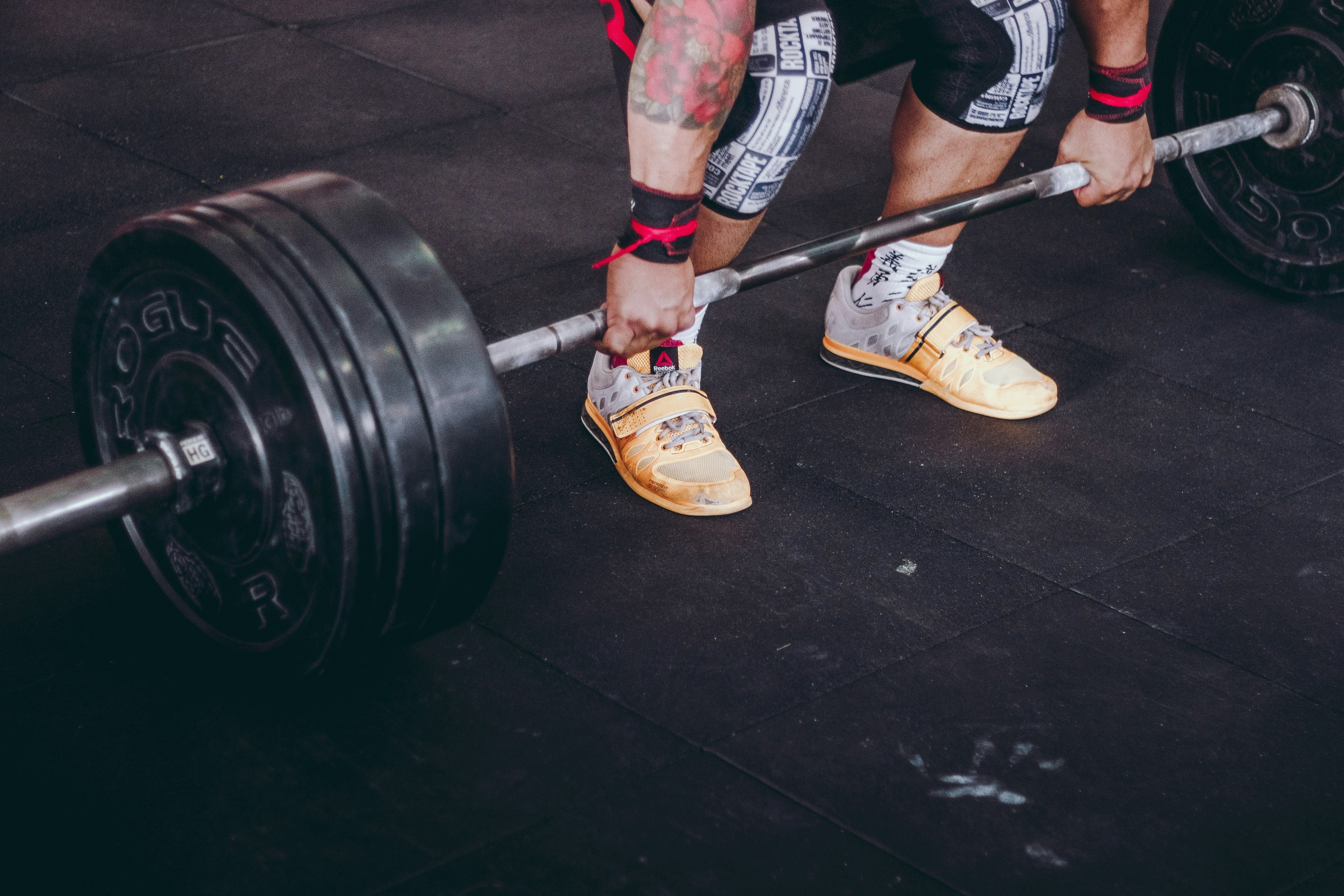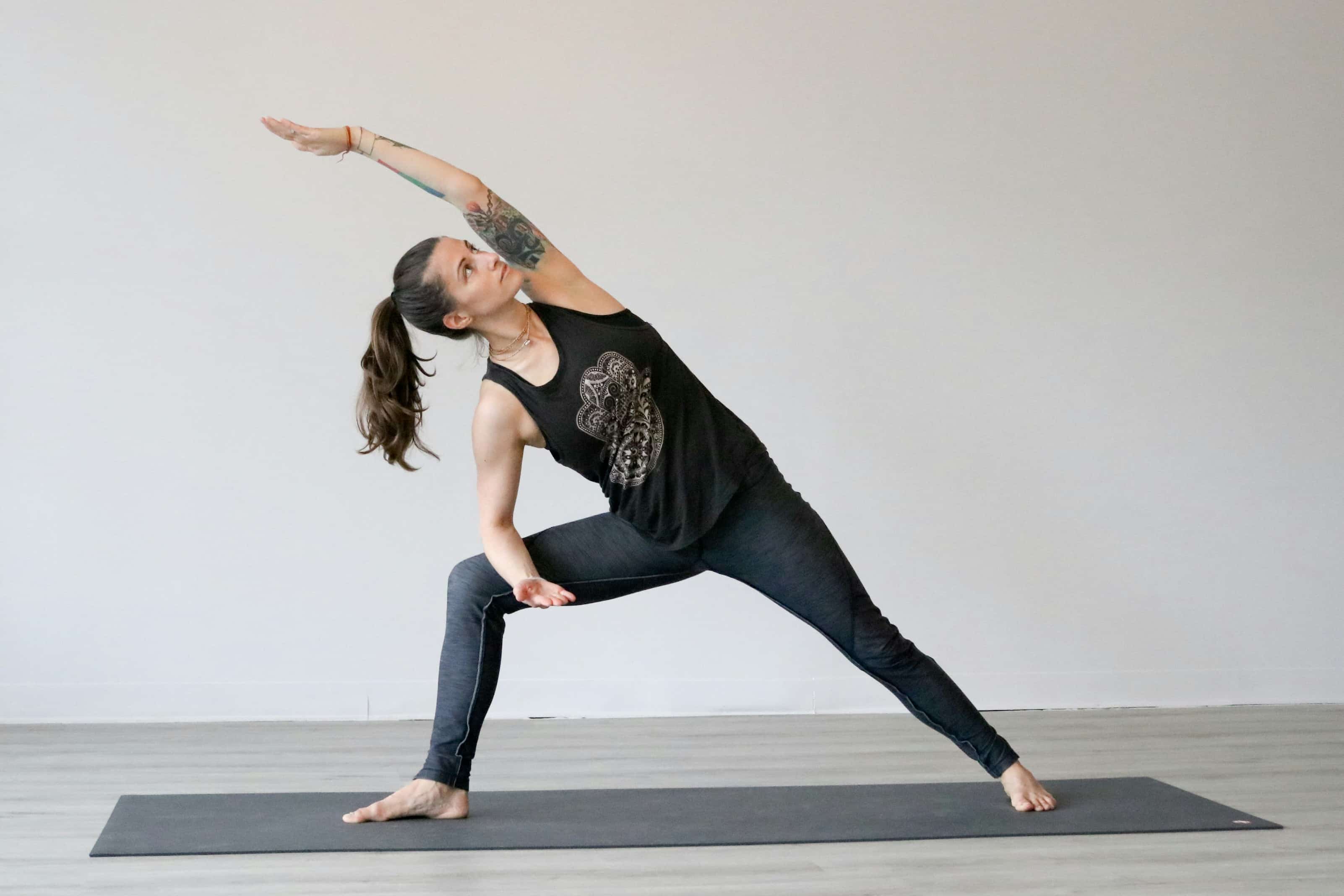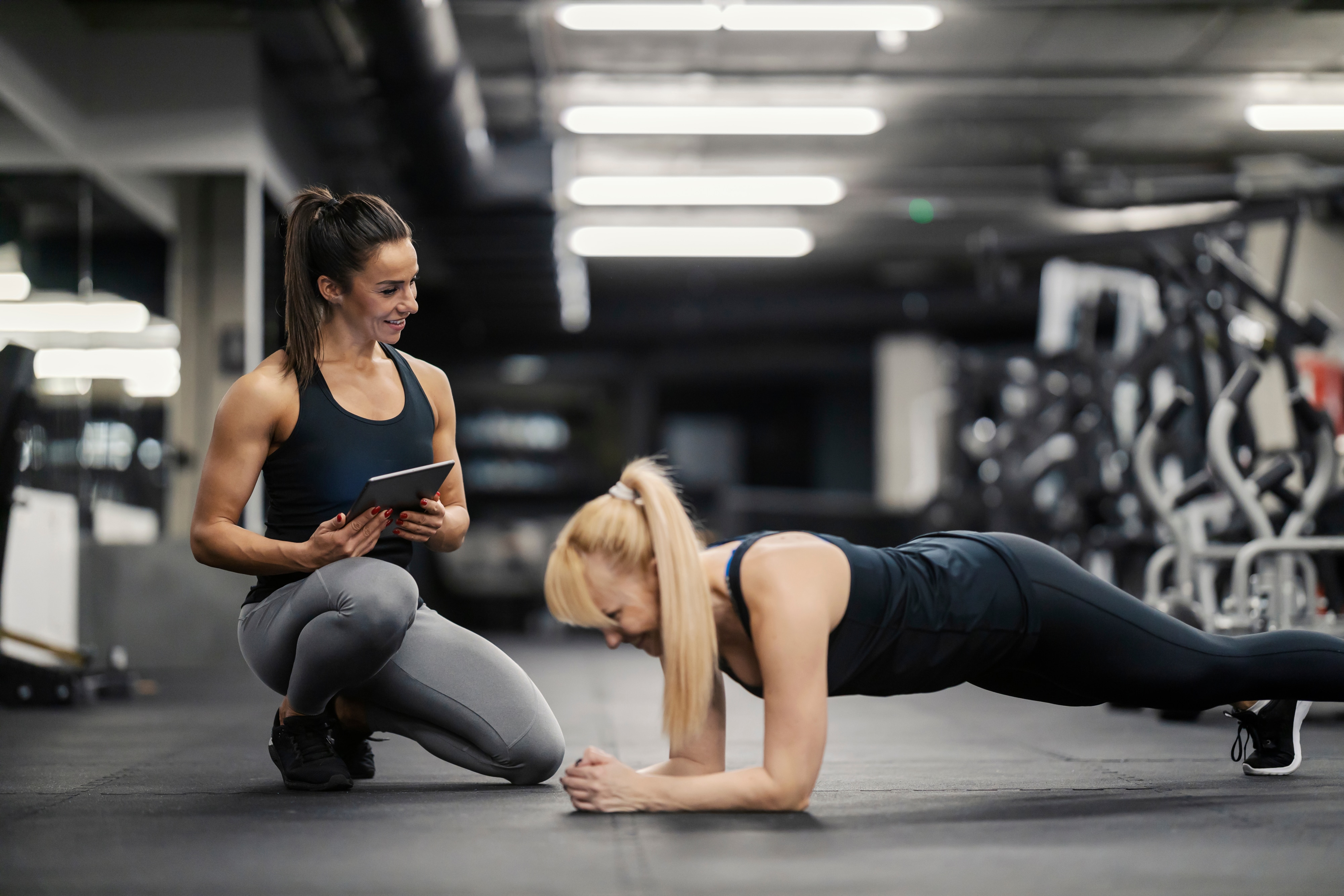When you meet a new client, one of the first things you should look out for is their ability to maintain proper posture.
In addition to being an aesthetic concern (i.e., that impacts your client’s self-esteem), poor posture can also increase your client’s risk of sustaining injuries during strength training.
For instance: A “hunched over” posture can severely impact a client’s shoulder overhead mobility. They’ll find pressing any load straight overhead, like in the barbell overhead press, to be a challenge—and will likely end up compensating for this fault by arching the lower back. And in turn, increase the risk of disc bulges and back pain.
And that’s just one exercise! Thus, highlighting the urgent need to fix a client’s postural misalignment. But how? Find out in this article.

Get Your Free Guide
Learn How to Start a Fulfilling, Impactful Career as a Holistic Health Coach
You’ll learn:
- Why holistic health matters
- If holistic health coaching is right for you
- What career opportunities exist for health coaches
- And more!
What Does Poor Posture Look Like?
It’s impossible to explain what poor posture looks like without first covering the basics of “good posture.” So, let’s start there. The key to good posture lies in the spine’s three natural curves—at the neck, mid-back, and lower back.
Proper posture should maintain these curves but not increase them.
Meaning? When standing, your client’s head should be squarely above their shoulders, and the top of their shoulders should be over the hips.
Take a look around the gym the next time you’re in, and you’ll quickly come to realize that most people struggle with the following posture problems (which you might already be familiar with but simply didn’t know the corresponding terminology):
- Forward head: Also known as “text neck.” Refers to a specific type of posture where the head is positioned in front of the body’s vertical midline.
- Kyphosis: Also called the “hunchback posture.” Refers to an exaggerated curvature of the upper back (i.e., the thoracic spine) where the shoulders are rounded forward.
That said, an important thing to note is that these two poor postures don’t have to occur separately. It’s common for people to display both stooped, rounded shoulders and a bent-forward neck at the same time. There’s a name for this: “upper crossed syndrome.”
What Causes Upper Crossed Syndrome?
The development of upper crossed syndrome comes down to two things:
- Overactive muscles: Specifically, the upper traps and chest muscles become overactive (i.e., “tight”)—and are now pulling the shoulders into the forward-rounding position.
- Weak, underactive muscles: The surrounding counter muscles become underused and weakened due to the overactive muscles mentioned above. These muscles include the rhomboids, along with the middle and lower traps, which are all responsible for pulling the shoulders back into the neutral position.
But wait. How does this “muscular imbalance” develop in the first place?
Barring medical reasons like osteoporosis, the primary contributing factor to the upper crossed syndrome is poor posture, specifically sitting or standing with the head forward for prolonged periods.
Activities that promote this problematic postural position include:
- Computer use
- Mobile phone usage
- Driving
- Reading
- Biking
In some cases, a client who’s overenthusiastic about training their chest can also run into this postural issue—since, as mentioned, the pecs can begin to pull the shoulders into the forward position. This is particularly so when the back is relatively undertrained.
How to Fix Poor Posture
To address the upper crossed syndrome, you’ll have to implement a routine for your client that achieves two important things:
- Strengthen the underactive muscle groups (i.e., rhomboids, along with the middle and lower traps)
- Stretch out the “overly tight” muscles
Strengthen the Weakened Muscles
Before diving in, it’s crucial first to cover the anatomy of the traps and rhomboid muscles.
The trapezius (i.e., “traps”) is a broad, flat, and triangular superficial back muscle that extends from the back of the head and neck to the shoulder. It consists of three parts: the upper traps, middle traps, and the lower traps.
On the other hand, the rhomboids are upper back muscles that connect between the spine and each of the two shoulder blades. They lie deep beneath the traps. As such, exercises that help target the middle and lower traps will also activate—and strengthen—the rhomboids.
Note: Most clients simply don’t know how to train the rhomboids, plus the middle and lower traps.
Something useful to tell your client would be that, on any back movement, they can gauge which part of the back they’re targeting by referencing their arm path. The smaller the angle between their elbows and the back, the lower the back region it targets (i.e., lower traps).
Accordingly, here are the best exercises you should have your client do—so they’ll build up the necessary strength in their mid- to lower-back region.
Exercise 1: Meadows Row
The Meadows Row is one of the best unilateral back exercises that’ll help strengthen your client’s middle traps in a balanced manner. To set up this exercise for your client, you’ll need to secure a barbell in a landmine attachment (or simply in a corner formed by two walls).
If you’re adding weight plates to the barbell, make sure to use smaller ones (e.g., 11 pounds instead of 25 pounds). This helps your client maximize the range of motion they’d get with the exercise.
A few important coaching cues to give when your client is performing the Meadows Row:
- Initiate the movement by squeezing the shoulder blades—pulling through the “back” instead of with the arms and driving the elbow back.
- Maintain a neutral spine while keeping the hips and knees stationary.
- Keep the elbow angle around 60 to 80 degrees (relative to the back) throughout the movement.
Exercise 2: Chest-Supported Dumbbell Row
Another exercise that helps target your client’s middle traps is something called the chest-supported dumbbell row.
This is an especially great option for clients who struggle to get into a bent-over position (as is required in the Meadows Row) because of tight hamstrings or a weak lower back. The additional stability provided by placing their chest against the incline bench allows your client to truly initiate the row through their back.
Just one thing to note: Remember to set the bench angle to around 30 degrees.
That’s because the larger the bench angle (e.g., 80 degrees), the more upright your client will be while performing the exercise—and that shifts the load onto the upper traps, instead of the middle traps, since your client is now basically performing a “shrugging” motion.
Two useful cues to help your client better target their middle traps:
- Pull elbows “up and back” toward the hips.
- Keep the chest flat against the bench throughout the movement (prevents hyperextension)
Exercise 3: Prone Y-Raise
Despite its “simple-looking” appearance, research shows that the prone Y-raise can elicit significantly higher lower trap activation when compared to other common lower trap exercises (e.g., chin-ups).
For this exercise, you can either get your client to lay on the floor or an incline bench set to roughly 30 degrees; both are fine.
Once your client is in the starting position, have them raise their arms in a Y-position with their thumbs pointing up.
And although research shows that internally rotating the shoulders while performing the Y-raise can lead to increased lower traps recruitment, you should still have your client stick to either neutral or external rotation.
This is because their poor posture already puts them at an increased risk of shoulder impingement issues.
In general, you’ll want to start your clients out with no weight at all—and then very gradually add load (i.e., dumbbells) as their lower trap strength improves.
Focus on Thoracic Extension Exercises
All the corrective work you’ve done thus far to address your client’s poor posture wouldn’t be complete without helping your client “open up their chest.” And research shows that one of the best ways to do so would be through thoracic extension exercises.
In other words, exercises that involve upper back arching.
Roller Thoracic Extension
All you need for this exercise is a foam roller.
Once you’ve got that, have your client lay down, with the back flat on the ground, and place the foam roller across their upper to mid-back area.
Never position the roller across a client’s lower back, as that could lead to hyperextension.
From there, get your client to extend their back over the roller as they reach their arms overhead.
Have your client try to touch the backs of their hands to the ground behind them without lifting their butt off the ground. Make sure your client holds the position for 1-2 seconds before repeating the exercise—moving further up the upper back each time.
Exercise 2: Camel Pose
Look at the camel pose, and you’ll see that it’s basically the opposite of what your client does all day seated, hunched over, at their desk: It’s the crucial extension they need to balance out all that flexion.
To get your client into the camel pose, have them kneel with their body upright and hips stacked over the knees. They should then sit back on their heels—while placing a hand on each heel. Then, while their hands are still on their heels, have them arch their hips “up and away,” extending their hips as they lift their glutes off the heels.
Make sure your client isn’t simply arching their lower back to bridge up.
If your client struggles with this exercise, you can regress it by having them perform it with a bench behind them; this means they no longer need to place their hands on their heels.
Exercise 3: Wall Slides
In addition to being a great thoracic extension exercise in and of itself, wall slides can also serve as a “progress indicator” for your client—improvements in their thoracic mobility will directly translate into better exercise form.
Here’s how you can get your client to do the wall slides.
First, have them stand with their heels, butt, upper back, shoulders, arms, and hands against the wall. Ultimately, what you want your client to do during the exercise is slide their hands up and down against the wall.
A key thing to look out for as your client performs the exercise is this: At no point through the movement should you observe lower back arching.
That’s a sign that they’re getting the extension from their lower back instead of through the upper back.
And don’t worry if this movement is too challenging for your client right from the get-go. You can drop the difficulty level by getting your client to move their feet further away from the wall.
Takeaway
While helpful, there’s a caveat to all these exercises: Clients must be mindful of maintaining good posture in the first place. No amount of corrective work would help if the clients routinely reverted to their poor postures in their daily life.
On your part, select exercises that are a good fit for your clients’ lifestyles.
Exercises that are convenient and easy to perform for your clients (e.g., wall slides in the office) would encourage adherence.
Most importantly, always remind your clients that it will take time to correct any postural issues. There’s no quick fix or shortcuts here. As a coach, be patient and understanding because every client faces unique challenges in their daily lives, and some will require much more work to address than others.

Get Your Free Guide
Learn How to Start a Fulfilling, Impactful Career as a Holistic Health Coach
You’ll learn:
- Why holistic health matters
- If holistic health coaching is right for you
- What career opportunities exist for health coaches
- And more!
References
- https://www.ncbi.nlm.nih.gov/pmc/articles/PMC4713804/
- https://www.ncbi.nlm.nih.gov/pmc/articles/PMC6942109/
- https://www.ncbi.nlm.nih.gov/books/NBK558945/
- https://www.ncbi.nlm.nih.gov/pmc/articles/PMC6477943/
- https://www.researchgate.net/publication/320225205_PREVALENCE_OF_UPPER_CROSS_SYNDROME_AMONG_THE_MEDICAL_STUDENTS_OF_UNIVERSITY_OF_LAHORE
- https://pubmed.ncbi.nlm.nih.gov/12774999/
- https://www.ncbi.nlm.nih.gov/pmc/articles/PMC3881488/



